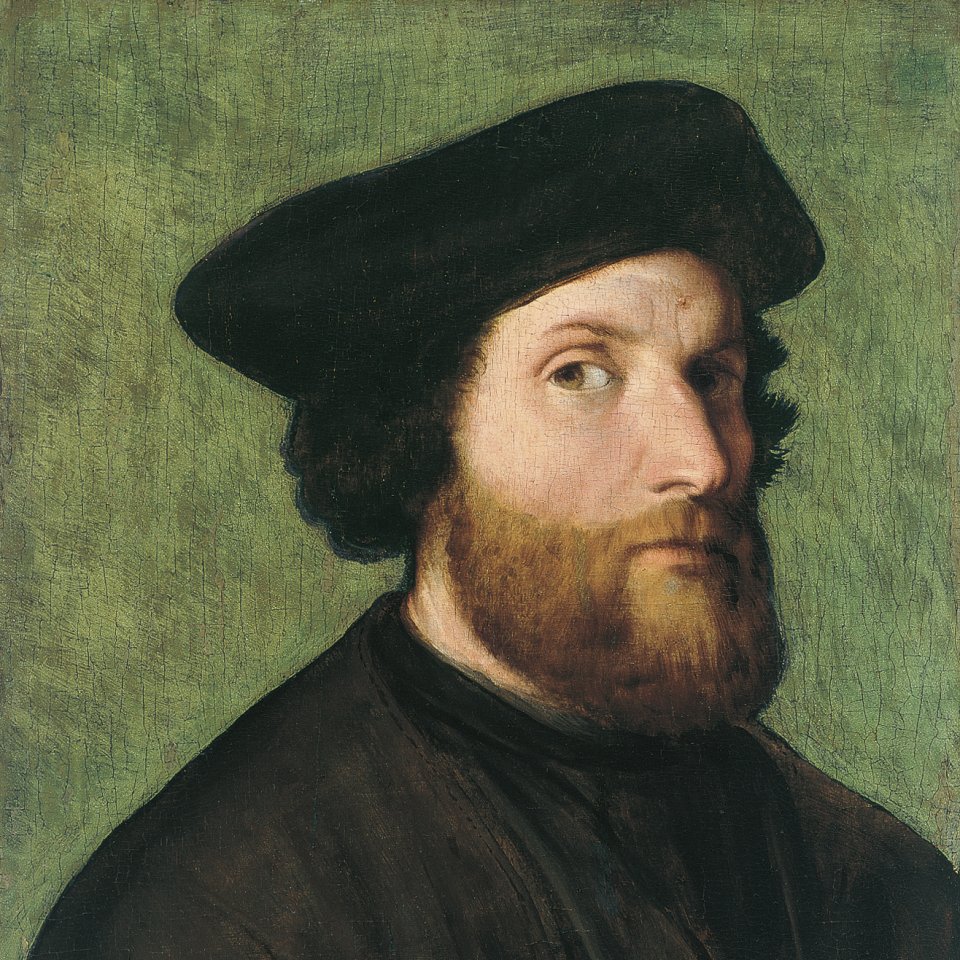Portrait of a Man
Antonello da Messina, who according to Vasari learned the technique of oil painting directly from Van Eyck during a trip to Flanders, was the most important artist of the Sicilian school and the figure who disseminated the new technique of oil painting throughout Italy. Trained in Naples, his brief trip to Venice (from November 1475 to prior to September 1476 when he is once more documented in Messina) was crucial for the development of the genre of portraiture in that city. Antonello had a decisive influence on Venetian artists such as Giovanni Bellini and continued to be of great importance to the next generation of painters including Giorgione and Titian. It is now generally accepted that Antonello trained in the workshop of the Sicilian painter Colantonio, and Vasari’s proposal of a trip to the north is no longer considered likely but was probably an invention designed to explain the northern influence evident in Antonello’s work.
The circulation of styles that took place in southern Italy in the 15th century, in which Italian, Spanish, Provençal and Flemish influences were combined, has been borne in mind by modern authors when attempting to establish the nature of Antonello’s connections with the Low Countries. Nonetheless, it is still not fully understood how he learned and assimilated the northern aspects evident in his works. His knowledge of the work of Van Eyck and Van der Weyden has been explained by reference to the works by these artists to be found in Naples in the collection of Alfonso I. With regard to his dependence on models by Petrus Christus, it is still not decided whether Antonello may have trained with that artist.
The present panel has an inscription on the parapet in capital letters that reads “ANTONELLUS MESSANUS PINX”. It was formerly in the collection of Sir George Houston-Boswell in Caulderhaugh, Scotland, where it arrived by inheritance. Later it was owned by Lady Houston-Boswell in Windsor and Mrs Phoebe Timpson in Goring-on-Thames, its third British owner and the last prior to its entry into the Thyssen-Bornemisza collection. The panel entered that collection in Lugano in 1964. While the panel was in England it was exhibited once in London at the Burlington Fine Arts Club between 1934 and 1935 and its first reference in the literature dates from 1964 when it entered the Thyssen-Bornemisza collection. This first commentary was by Philip Hendy, who included it in his study of various Italian Renaissance paintings in the Collection. Three years later Pallucchini wrote a text on the panel, which was included in Antonello’s oeuvre from that point on.
This portrait of an unknown sitter is one of around a dozen surviving autograph portraits by Antonello da Messina and its format and typology conform to other known works. The sitter is located against a dark background, his face emerging forcefully. He is arranged in three-quarter profile and looks at the viewer with a penetrating gaze. The solidity of the head, in which the details such as the hair and stubble are rendered with great precision, are softened by delicate outlines and a modelling that gives the features a gentler air and suggests Italian art. The portrait is signed at the lower edge on the parapet that leads into the composition. This device was used by Antonello in other portraits such as the ones in the Museo Civico in Turin and in the Louvre. The artist also favoured the parapet for the location of a cartellino with his name and the date of the work (as found in the above-mentioned panels in Turin and the Louvre) or to include his name in the manner of an inscription (as in the present panel).With regard to the date of the work, two suggestions have been made: slightly prior to the artist’s trip to Venice, around 1472–73, or during his time in Venice between 1475 and 1476. Rosenbaum compared the bust of this young man with two others by the artist: one in the Metropolitan Museum of Art, New York, and another in the Johnson collection in the Philadelphia Museum of Art. The panel was cut down at the lower edge in the past and transferred to its present support.
Mar Borobia











